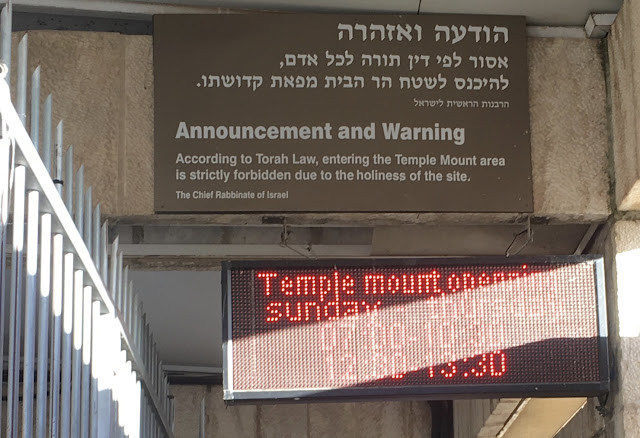New Years Day 2019, Sten and I arrived at Ben Gurion airport in Tel Aviv. A shared taxi took us and a dozen other varied travelers the hour's drive to Jerusalem and directly to our destinations. For us, that was the G.F. Albright Institute of Archaeology in East Jerusalem, where my husband has an annual professor fellowship. This will be our home for the next 4 1/2 months. The institute houses offices, a library, a lecture hall/gathering space, several apartments, a hostel, a dining hall and kitchen. It's built on three sides of a beautiful stone-paved court yard.
In exploring our neighborhood, we became aware that The Edward Said National Conservatory of Music, affiliated with Birzeit University, is just around the corner from us. Last week they celebrated their 25th anniversary with a concert featuring performances by many of their ensembles. These ranged from a brass group and a string orchestra playing classical works by European composers to various ensembles featuring vocalists, oud (precursor to the lute), qanun (a flat, zither-like instrument of 26 strings played by plucking), flute, drums, and cello. The quality of musicianship was excellent and the concert was very enjoyable.
Friday evening at the beginning of Shabbat we walked into the Old City to the Western Wall. We've been there many times, but I've never seen it so crowded with people, celebrating the beginning of the Sabbath. Men and woman, as in a synagogue service, worship and pray in different places, so Sten and I separated as well. Within minutes of entering the women's section, I was pulled into a circle dance of women, linking elbows and stepping in unison one direction, then the other, moving in towards the middle of the circle, then out, and with lots of jumping in the process. The music was created by the women themselves, either singing words (which of course I didn't know) or just singing the syllable "na" (which I quickly was able to join in on). There was an exuberance and joy in the atmosphere that was very contagious. Excellent exercise, I must say.
One morning at 7:00 a.m. we joined others from the Albright for a tour of the Temple Mount area, led by an art historian who has worked on restoration of the ceramic tiles on the Dome of the Rock. This area is only open to non-Muslim visitors for three hours in the morning and one hour at noon. Years ago, I was able to enter both Al Aqsa mosque and the Dome of the Rock shrine, but now they are only open to Muslims. In order to not wait long, we were in line at opening time. One must bring along a passport and go through airport-like security checks to enter. In the photo above, you can see the elevated wooden walkway (center of picture) which is how you enter the area.
Because of the connections of our guide, we were able to see the small workshop of the craftsmen who build the replacement windows for the Al Aqsa mosque. Not only was their work interesting, but the shop was warm -- a very welcome respite from the sunny, beautiful, but cold day outside.
The most impressive part of the Temple Mount is, of course, the Dome of the Rock. Next to Mecca and Medina, this place is the 3rd holiest site in Islam. It is built over the stone from which the Prophet Mohammed is said to have ascended into heaven. The late King Hussein of Jordan was responsible for the restoration done in 1998, apparently funding the cost of the 80 kg of gold used to coat the dome by selling one of his homes in London. The shining golden dome is visible from all around the city, and the shrine's mosaics and tiles are stunning.
All in all, I think we've had an event-filled first week in The Holy City, Peace, Salam, Shalom.


















No comments:
Post a Comment